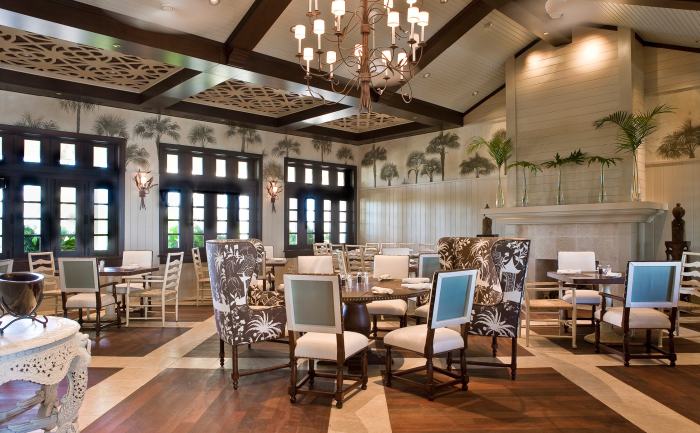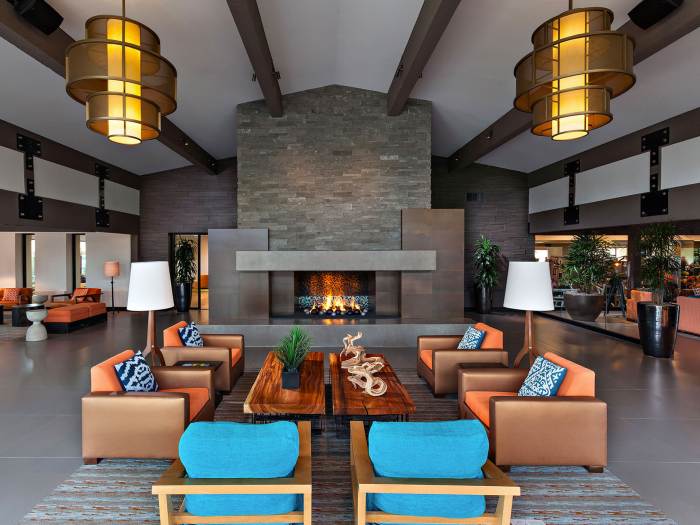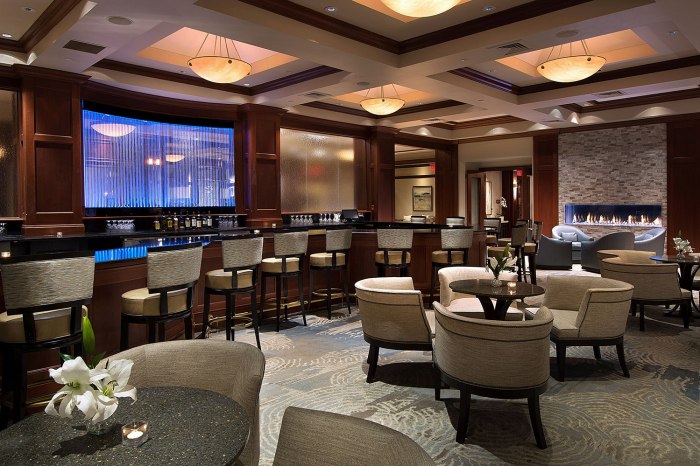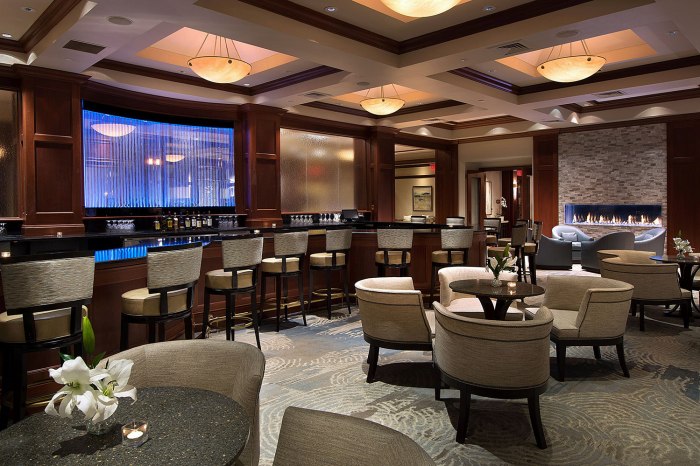Club house interior design is more than just aesthetics; it’s about crafting an atmosphere that fosters community, comfort, and functionality. Whether it’s a bustling social hub or a tranquil retreat, a well-designed clubhouse invites members to connect, relax, and feel a sense of belonging.
This guide delves into the multifaceted world of club house interior design, exploring key elements like ambiance, functionality, style, sustainability, and the integration of technology. We’ll uncover how to create a unique identity for your clubhouse, manage budget considerations, and learn from real-world case studies.
Technology Integration

Technology plays a crucial role in elevating the clubhouse experience, creating a modern and connected space for residents. From smart home features to advanced audio-visual equipment and digital signage, technology seamlessly integrates into various aspects of clubhouse life, enhancing communication, entertainment, and security.
Smart Home Features
Smart home features are becoming increasingly prevalent in clubhouses, offering convenience, energy efficiency, and enhanced security. These features can be controlled remotely through mobile applications or voice commands, allowing residents to manage various aspects of the clubhouse environment from their smartphones or smart speakers.
- Automated Lighting:Smart lighting systems can adjust brightness and color temperature based on time of day or user preferences, creating the perfect ambiance for different activities. They can also be programmed to turn on and off automatically, reducing energy consumption and enhancing security.
- Temperature Control:Smart thermostats allow residents to control the temperature of the clubhouse remotely, optimizing energy usage and maintaining comfortable conditions throughout the year. This is particularly beneficial for spaces that are used infrequently, such as meeting rooms or guest suites.
- Security Systems:Smart security systems provide real-time monitoring and control of access points, such as doors and windows. They can send alerts to residents’ phones in case of intrusion attempts, providing peace of mind and enhancing safety.
Budget Considerations: Club House Interior Design

Designing a clubhouse interior requires careful budgeting, as costs can vary widely based on the project’s scope and the desired level of luxury. This section explores the factors that influence clubhouse interior design budgets and offers strategies for optimizing costs without compromising quality or aesthetics.
Factors Influencing Clubhouse Interior Design Budgets
The budget for clubhouse interior design is influenced by a variety of factors, including:
- Size and Scope of the Project:Larger clubhouses naturally require more materials, labor, and furnishings, leading to higher costs. The complexity of the design and the number of rooms or spaces to be designed also contribute to the overall budget.
- Desired Level of Finish:The quality of materials, fixtures, and furnishings significantly impacts the budget. High-end materials, custom-made pieces, and elaborate finishes will inevitably drive up costs. For instance, using solid wood flooring instead of laminate will increase the budget, but it will also contribute to a more luxurious and durable finish.
- Location:Labor and material costs vary depending on the location of the clubhouse. Urban areas typically have higher costs compared to rural locations. Additionally, the availability of specific materials and skilled labor can impact pricing.
- Existing Building Conditions:The condition of the existing building can impact the budget. Renovations requiring extensive structural work or upgrades to existing infrastructure will increase costs. For example, replacing outdated electrical wiring or plumbing systems can add a significant amount to the budget.
- Design Fees:Professional interior designers charge fees based on the project’s scope and complexity. These fees can vary widely depending on the designer’s experience, reputation, and location.
Strategies for Optimizing Clubhouse Interior Design Costs
While achieving a luxurious clubhouse interior requires careful budgeting, several strategies can help optimize costs without sacrificing quality or aesthetics:
- Set a Realistic Budget:Before embarking on the design process, establish a clear and realistic budget that reflects the club’s financial capabilities. This will guide the design decisions and prevent overspending.
- Prioritize Key Areas:Focus on key areas that will have the most significant impact on the overall experience, such as the main lounge, dining area, and bar. These areas can be given more attention in terms of materials and finishes, while other areas may benefit from more cost-effective solutions.
- Explore Cost-Effective Materials:Research and consider cost-effective alternatives to high-end materials without compromising quality or durability. For example, using engineered wood flooring instead of solid wood can achieve a similar aesthetic at a lower cost. Additionally, exploring locally sourced materials can reduce transportation costs and support local businesses.
- Utilize Existing Furniture and Decor:If the clubhouse has existing furniture or décor in good condition, consider incorporating them into the new design. This can help save money on new furnishings and create a unique character for the space.
- Consider DIY Projects:Some tasks, such as painting, wallpapering, or minor furniture repairs, can be done DIY to save on labor costs. However, it is essential to ensure that the DIY projects are within the skillset of the team and meet safety standards.
Cost-Effective Design Solutions for Clubhouses
There are numerous cost-effective design solutions that can be implemented in clubhouses without compromising on aesthetics:
- Use of Neutral Colors:Employing a neutral color palette for walls and furniture can create a timeless and elegant atmosphere while allowing for pops of color through accents and accessories. Neutral colors also provide a blank canvas for future changes and updates.
- Mix and Match Furniture:Combining different styles and eras of furniture can create a unique and eclectic look. This approach allows for incorporating vintage or secondhand pieces at lower costs, adding character and personality to the space.
- Utilize Natural Light:Maximizing natural light through large windows and skylights can create a bright and inviting atmosphere, reducing the need for artificial lighting and lowering energy costs.
- Incorporate Greenery:Adding plants and greenery to the clubhouse can bring life and freshness to the space, improving air quality and creating a calming and inviting environment. Choosing low-maintenance plants can minimize ongoing care costs.
- Use of Mirrors:Strategic placement of mirrors can create the illusion of more space and enhance the natural light, reducing the need for additional lighting fixtures and adding a touch of elegance.
Case Studies

Learning from existing clubhouses provides valuable insights into successful design elements and areas for improvement. By analyzing various design approaches and their impact on user experience, we can inform future design decisions and create more effective and enjoyable spaces.
Clubhouse interior design often draws inspiration from a variety of sources, including the surrounding environment. For a coastal clubhouse, for instance, you might find elements reminiscent of australia house interior design , such as light wood tones, breezy fabrics, and a relaxed, open floor plan.
These elements create a welcoming atmosphere that reflects the casual, laid-back vibe of the seaside.
Clubhouse Design Approaches and User Experience, Club house interior design
Different design approaches cater to varying user needs and preferences. Examining successful and unsuccessful clubhouse interiors reveals key insights into how design choices influence user experience.
- Traditional Clubhouses: These often feature classic architectural elements, rich materials, and a formal atmosphere. They prioritize comfort and exclusivity, appealing to a more traditional clientele.
- Modern Clubhouses: Modern clubhouses embrace minimalist aesthetics, clean lines, and contemporary materials. They prioritize functionality, open spaces, and a more casual atmosphere.
- Sports-Oriented Clubhouses: Designed for athletic activities, these clubhouses emphasize functionality and performance. They often feature spacious training areas, locker rooms, and recovery facilities.
- Community-Focused Clubhouses: These prioritize social interaction and community building. They feature comfortable gathering spaces, meeting rooms, and outdoor areas for socializing.
Closure
Designing a clubhouse interior is a journey of creativity, functionality, and a deep understanding of the community it serves. By considering the unique needs and aspirations of your members, you can create a space that not only meets their expectations but also fosters a sense of shared experience and lasting memories.
FAQ Guide
What are some popular clubhouse design styles?
Clubhouse interior design can embrace a wide range of styles, from traditional and classic to modern and contemporary. It depends on the club’s identity, target audience, and desired ambiance. Some popular choices include traditional, modern, eclectic, minimalist, and industrial.
How can I incorporate sustainability into my clubhouse design?
Sustainability is crucial for modern clubhouses. You can incorporate eco-friendly materials like bamboo, reclaimed wood, and recycled fabrics. Energy-efficient lighting, water-saving fixtures, and responsible waste management are also essential.
What are some essential elements for a welcoming clubhouse ambiance?
A welcoming clubhouse ambiance is created through a combination of elements: comfortable seating, natural light, warm color palettes, inviting furniture arrangements, and carefully curated artwork. Consider incorporating natural elements like plants and greenery for a calming effect.
